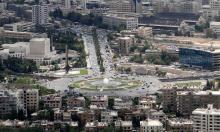Yuri Razgulaev: Water trouble is more fearful for Central Asia than any terrorists and refugees
At the beginning of November, some Central Asian mass media reported about results of expert commissions of Kazkhstan and Kirghizia that seem to have settled all disputable questions connected with common use of water resources of the region. Some journalists hastened to connect this with the work of the commissions. Though, practically the question was only about separate tactical issues, connected with not keeping agreements between the neighbours about supplies of water, gas and other energy carriers. While the strategic issue of water supply to the huge region did not moved forward, and it even became more complicated, and highly explosive, experts suppose. To be shorter, there is lack of water in Central Asia and this deficit becomes more serious with years. For already three years, Central Asia has been suffering of drought. The main source of spray water in the region is Toktogul reservoir. Recently, its level appreciably fell. Specialists even avoid to evaluate how much water has remained there. The water is under critical level, on which turbines stop their work. This summer, Kirghizia reduced volume of water supplied to neighbouring republics. Because of this water supply’s reduction, Uzbekistan sharply reduced squares of cotton crops, at the same time it produces now five times less rice than usually. With this lack of water, areas below Amu-Darya are influenced. In Karakalpak all wells and lakes dried up. Half-salted water is supplied here from account of 20 litre for a person. According to Uzbek government, about one million people have suffered from drought. So, Tashkent hopes to receive humanitarian help of 30 or 40 million dollars, which is necessary to survive. Every Central Asian country blames its neighbour. For example, Tashkent is sure of Kirghizia explaining its internal troubles with external factors, while trying to get money for what did not belong only to it. In this way, Uzbek prime-minister Utkir Sultanow explained Kirghizia’s decision to gather payments for water running through Uzbek water reservoir in Naryn. Though, Bishkek, in its turn, supposes its neighbours make the poor country spend big money for keeping civil engineering works serving to other countries. While calculating possible incomes, Kirghiz deputy Turdakun Usubaliev counted 350 million dollars Kirghizia’s neighbours owe it every year. Though, there are objective figures as well. They show that Central Asian population grows faster, than water resources. As a result, only 0.17 hectare of irrigated area falls now on a person in Uzbekistan, while minimal admissible figure is 0.30 hectare. According to some other accounts, in Uzbekistan 90 percent of water supplied from Kirghizia is being used for irrigation. Though channels’ condition allows only to three fourth of water to reach fields. Progressive drop systems of irrigation are not being used here, while they could reduce water consumption by dozens of times. The same could be said about domestic consuming of water. People in the most droughty regions consume 350-400 litres of water from water-pipe a day. It is even more than in the most developed Western countries. While in Karakalpak region, there are any water-pipes at all, so people seem to consume even more water there. In Kirghizia, the situation is not better: most of water reservoirs are in a very bad condition. Though, nobody of the conflict’s participants tried to patch holes in its part of the united water organism. They prefer to blame neighbours with all troubles. Some of them even threaten with military force to others to capture water reservoirs. But it could not enlarge water reserves. On the other hand, efforts to be observed to revive the old project of “turning Siberian rivers.” The local press even reported Islam Karimov seemed to have talked to Vladimir Putin about it, though without any noticeable results. The Russian President could be understood. Actually, Central Asia possesses huge reserves of water. Total water run-off of Amu-Darya and Syr-Darya rivers makes 100-120 cubic kilometres a year. 45-50 million people use this water. Water that reaches Aral lake makes about 2-2.5 thousand cubic metres per person a year, 5-6 thousands litres a day. It is enough for irrigation system and for communal needs. Of course, if the water is rationally used. Though real figures look in other way. So, every country tries to fight against thirst in its way. Turkmenistan declared about its plan to build an artificial sea in Kara-Kum desert. Tajikistan plans to finish building of Rogun hydroelectric power station. Therefore, Karakalpak region will get no water drop from Amu-Darya river. While Syr-Darya River could be blocked by Kirghizia that should use water reserves for producing electricity. Now, it is time to remember the year 1993, when the five sunny republics signed an agreement about joint activities for saving the region. Though the agreement still remains only on paper. Meanwhile, terrorist and refugees, mining of borders appear to be not so important, in comparison with water issue. It should be admitted, that the Central Asian countries need an arbiter from international community to settle this conflict, especially taking into account the region is near to another one, where the war is blazing.
Yuri Razgulaev PRAVDA.Ru Bishkek
Read the original in Russian: http://www.pravda.ru/main/2001/11/21/34064.html
Subscribe to Pravda.Ru Telegram channel, Facebook, RSS!




